Q1
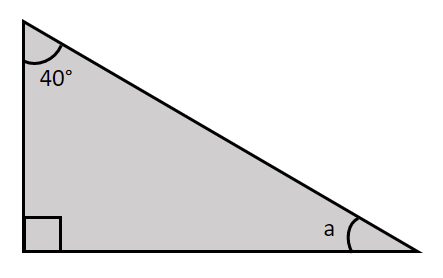
Work out the angle a.
Answer: 50\degree
60\degree
40\degree
30\degree
WORKING:
Angles in a triangle add up to 180\degree.
180\degree-90\degree-40\degree=50\degree.
Q2
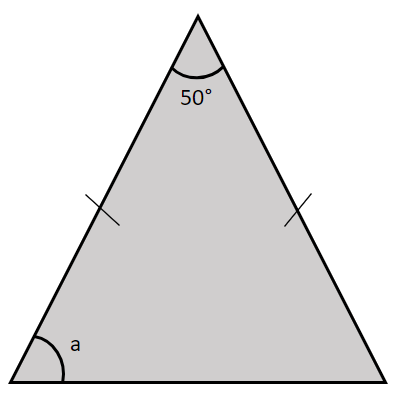
The triangle shown above is an isosceles triangle.
Find angle a.
Answer: 65\degree
Wrong Answers:
50\degree
60\degree
70\degree
WORKING:
As the triangle is an isosceles one. The two angles at the base of the triangle will be equal.
So a=\dfrac{180\degree-50\degree}{2}=65\degree.
Q3
Below is a parallelogram.
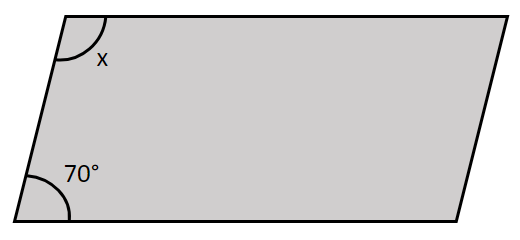
Find angle x.
Answer: 180\degree
Wrong Answers:
70\degree
100\degree
80\degree
WORKING:
Because the shape is a parallelogram, x+70+180.
x=180-70=110\degree.
Q4
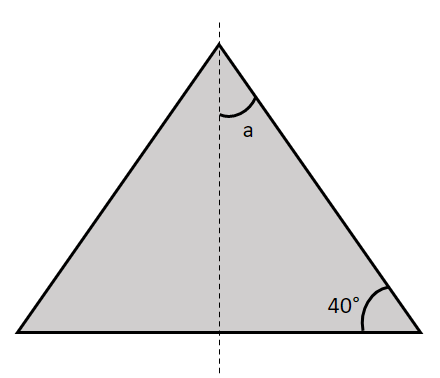
The diagram above shows a triangle with a line of symmetry.
Find angle a.
Answer: 50\degree
Wrong Answers:
60\degree
90\degree
70\degree
WORKING:
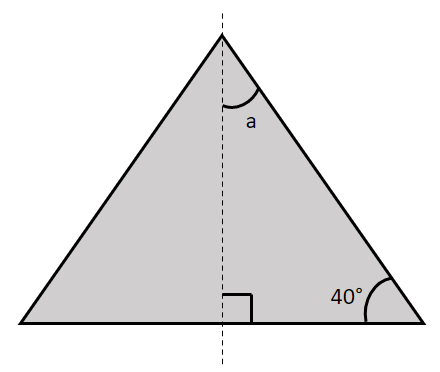
As the triangle has a line of symmetry, we can deduce that the larger triangle is made up of two smaller right-angle triangles.
Thus, a=180-90-40=50\degree.
Q5
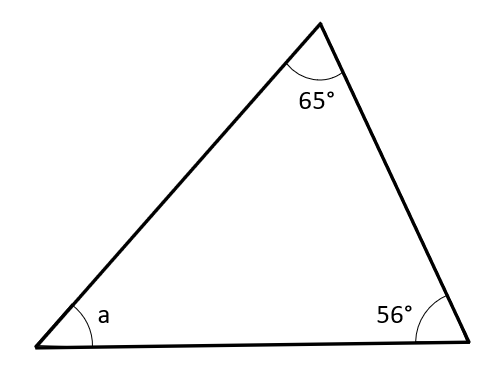
Find angle a.
Answer: 59\degree
Wrong Answers:
56\degree
69\degree
49\degree
WORKING:
Angles in a triangle add up to 180\degree.
a=180-65-56=59\degree.
Q6
The diagram below shows a parallelogram.
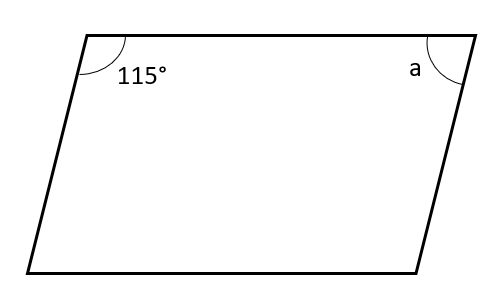
Find angle a.
Answer: 65\degree
Wrong Answers:
115\degree
75\degree
55\degree
WORKING:
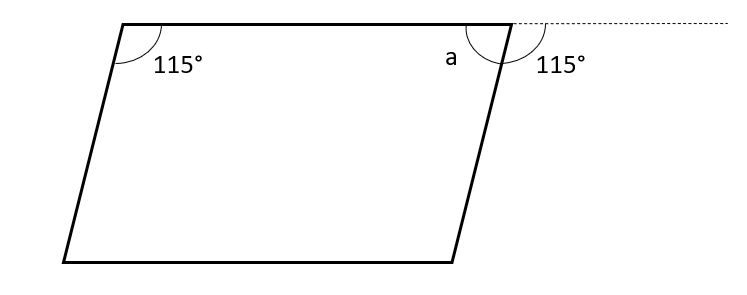
As shown in the diagram above, the exterior angle of a is 115\degree.
Thus, a=180-115=65\degree.
Q7
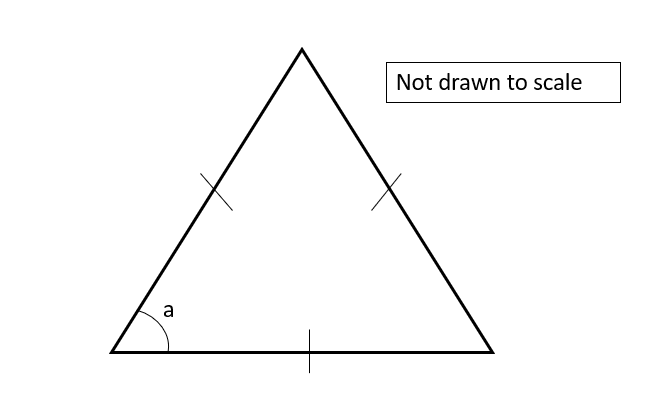
The diagram above shows an equilateral triangle.
Find angle a.
Answer: 60\degree
Wrong Answers:
50\degree
70\degree
90\degree
WORKING:
The interior angles in an equilateral triangle are equal.
Hence, a=180\div3=60\degree.
Q8
The diagram below shows a quadrilateral.
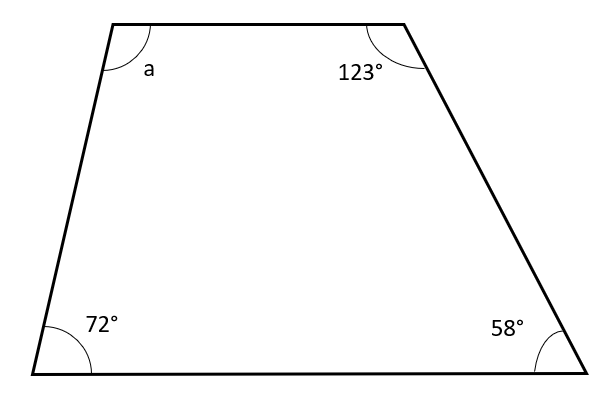
Find angle a.
Answer: 107\degree
Wrong Answers:
97\degree
117\degree
101\degree
WORKING:
Interior angles in a quadrilateral add up to 360\degree.
Thus, a=360-72-58-123=107\degree.
Q9
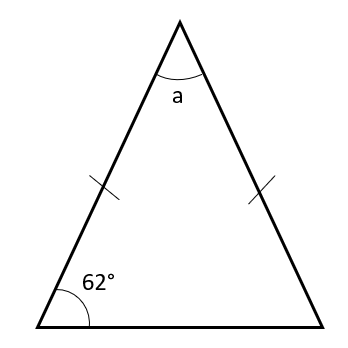
The diagram above shows an isosceles triangle.
Find angle a.
Answer: 56\degree
Wrong Answer:
62\degree
66\degree
54\degree
WORKING:
As the triangle is an isosceles one. The two angles at the base of the triangle will be equal.
So we can deduce that the third angle in the triangle is 62\degree.
Thus, a=180-(62\times2)=56\degree.
Q10
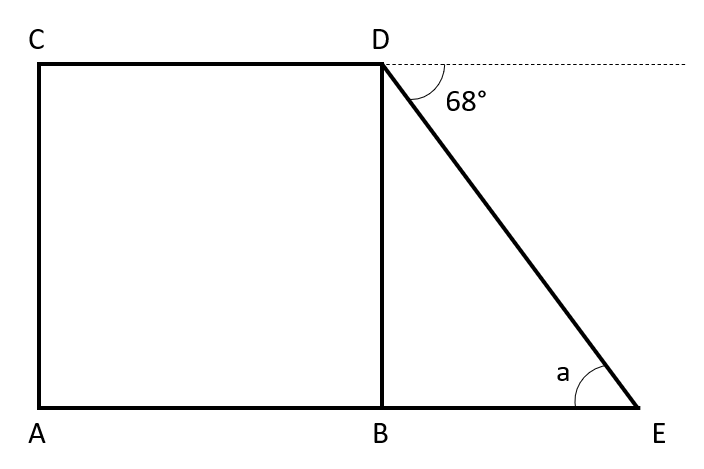
The diagram above shows the square ACDB and a triangle DBE, where ABE is a straight line.
Find angle a.
Answer: 68\degree
Wrong Answers:
22\degree
58\degree
48\degree
WORKING:
Because ACDB is a square, we know that all four angles in the square are 90\degree.
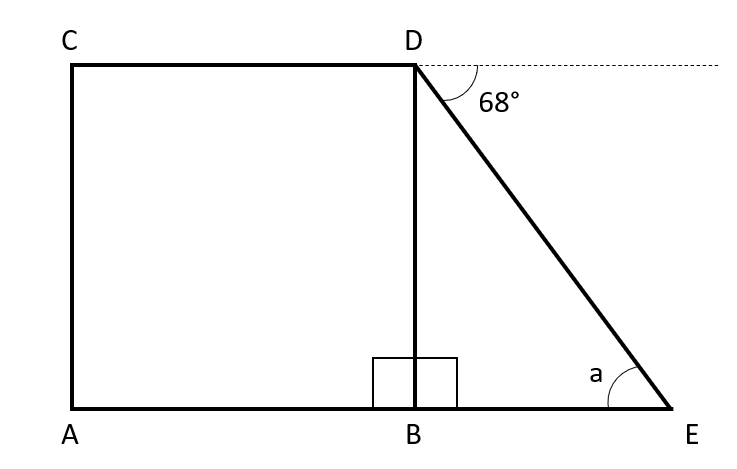
Therefore we can deduce that the triangle BDE is a right-angle triangle (as shown in the diagram above).
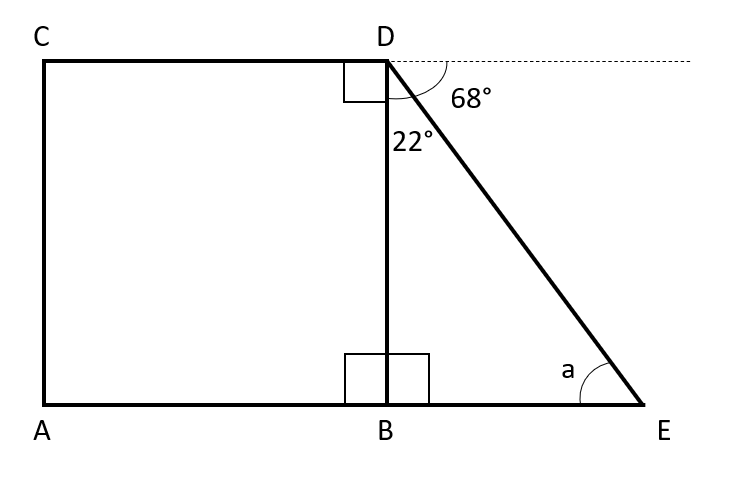
We can also find the third angle of the triangle by using the fact that angles on a straight line sum to 180\degree.
As shown on the diagram, 180-68-90=22\degree.
Finally, to find a, we use the fact that angles in a triangle sum to 180\degree.
a=180-90-22=68\degree.
